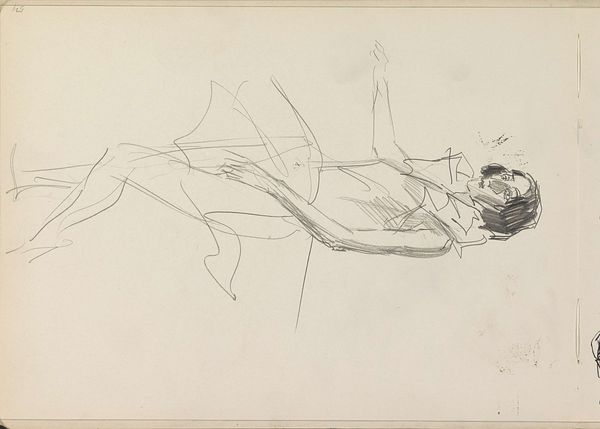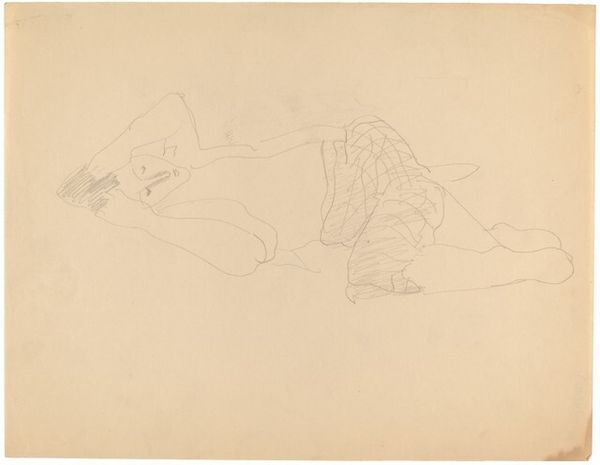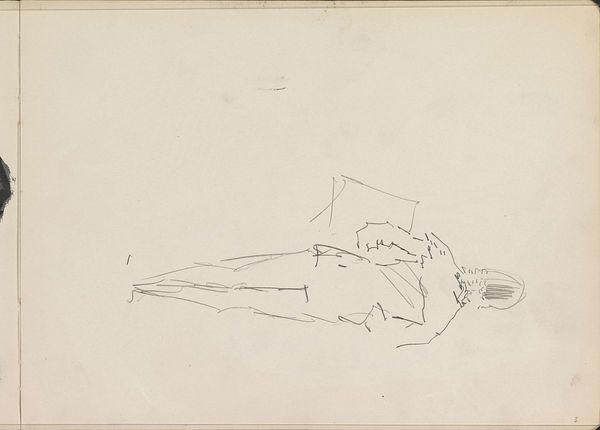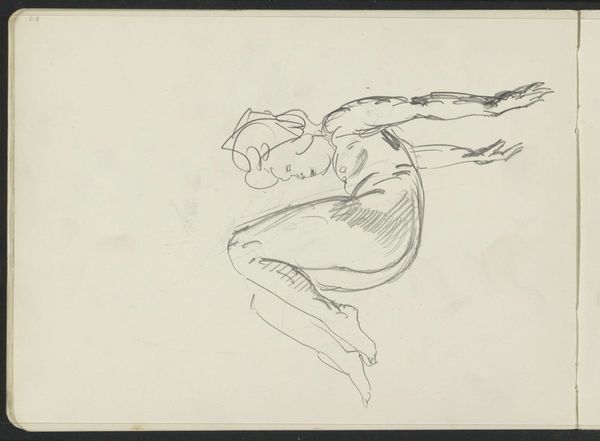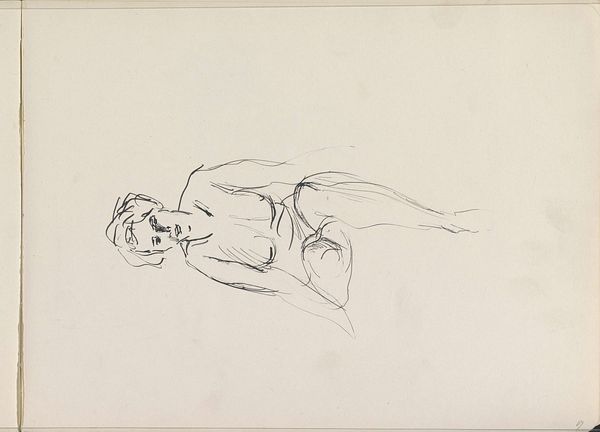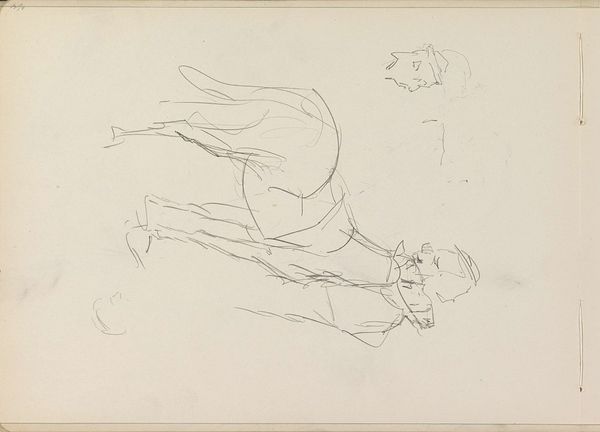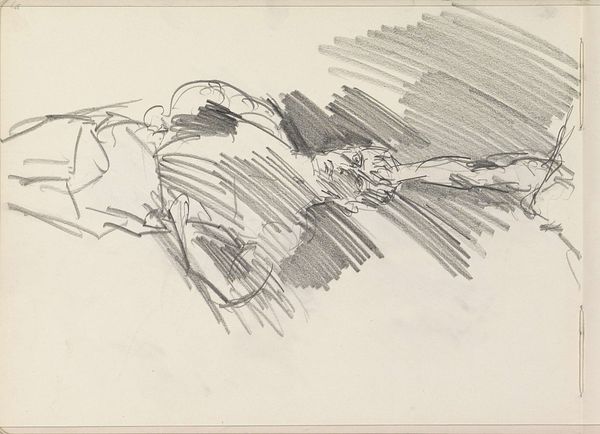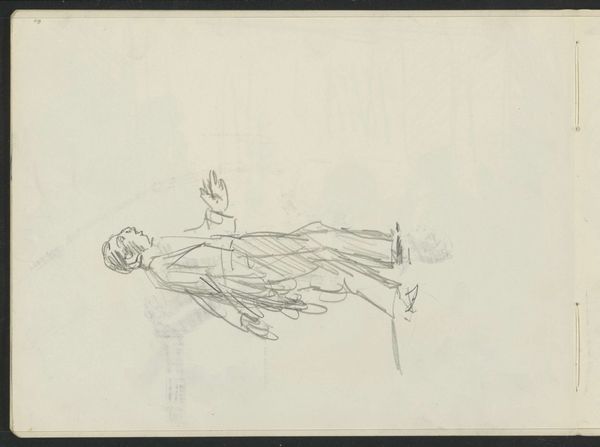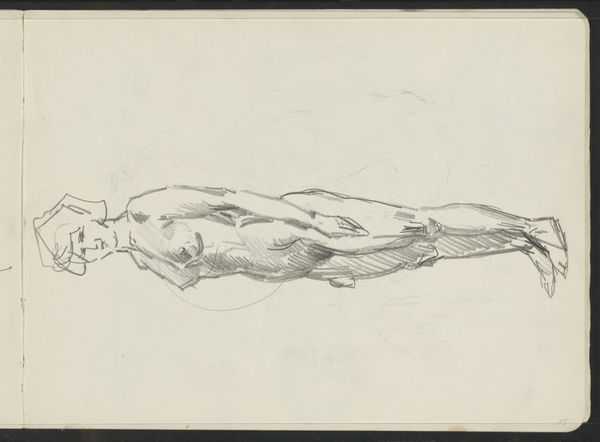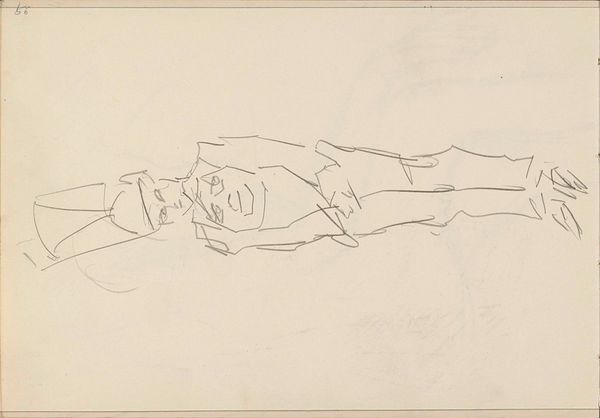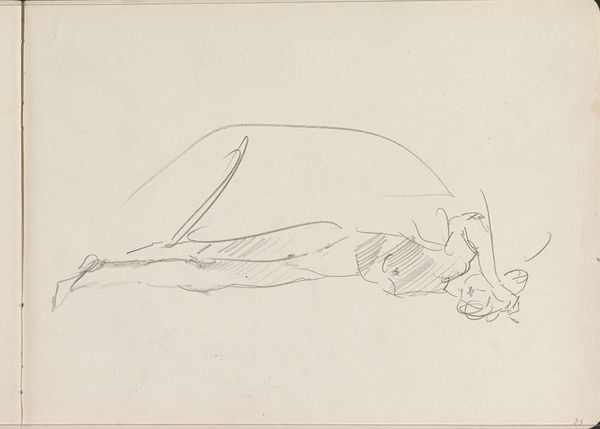
drawing, pencil
#
portrait
#
drawing
#
pencil sketch
#
pencil
#
modernism
#
profile
Copyright: Rijks Museum: Open Domain
Editor: Here we have Isaac Israels' "Standing Figure with Hat, in Profile," a pencil drawing from around 1915-1925. It's a very quick sketch, almost fleeting. What strikes me is the casual nature of it; it feels like a glimpse into a private moment. What do you see in this piece? Curator: The rapid lines are key, aren't they? They tell us a lot about the changing role of art itself. By the early 20th century, art no longer had to be meticulously representational to hold value, thanks to photography and shifting cultural priorities. Instead, the *artist's* individual vision, the *process* of creating, becomes paramount. Do you see how the incompleteness of the sketch almost becomes the point? Editor: Yes, it’s like capturing an impression more than a likeness. Were quick sketches like this common for artists at the time? Curator: Absolutely. Modernism moved artists out of studios and into the streets and cafes. The sketch becomes a tool for recording immediate experiences, and also, importantly, for the democratization of art. Mass media meant that visual language, including works like this, became accessible to wider audiences beyond the elite. It helped normalize, and even popularize, new artistic styles, influencing fashion, advertising, and graphic design. This pencil sketch might seem simple, but it reflects big shifts in the art world and wider society. Editor: I hadn't considered that it connects to democratization! Thanks, I learned something new today. Curator: And I am reminded of the fascinating impact of technology on artistic practice.
Comments
No comments
Be the first to comment and join the conversation on the ultimate creative platform.
